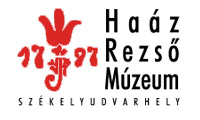Kovács Petronella (szerk.): Isis - Erdélyi magyar restaurátor füzetek 15. (Székelyudvarhely, 2015)
Mester Éva: Az egyszerű geometrikus elosztású ablakok védelme és megőrzésük fontossága
where after a flood it stood in 10 cm deep water for several days. This fact can explain the severe deterioration of the artifact, why the ground and paint layers had blistered and peeled widely, at many areas. Due to poor adhesion of these layers to the support, large amount of gaps have been developed on the painting, in form of shell-like scaling. The mainly vertical peeling areas were clearly visible and implied that when the art object stood in water, the canvas absorbed the moisture so decreasing and ceasing the adherence of the rigid layers. The ground and the paint layers became detached from the textile support and curled up like leaves. After the photo documentation and scientific investigations, restoration began with the reattachment of the peeling fragments, after that the removal of the several varnish layers and contamination was carried out. This intervention was followed by the cleaning of the painting’s reverse side, removing the soiling and dust mechanically. Next the deformed areas had to be smoothed out. For consolidation purposes of the fragile layers, the reverse side of the painting was impregnated with BEVA 371. The painting was given new stretcher bars and then patches of fabric similar to the support canvas were added to fill the gaps and missing parts caused by earlier damage. Unevenness in the canvas was reduced and the painting’s altered shape was corrected with the help of vacuum table. This was followed with the infilling of lacunas, on which the first touch-up coats were done using aquarelle and acrylic paints. The canvas was stretched on its original and modernized stretching frame and was varnished afterwards. Final aesthetic reintegration was made using varnish mixed with oil paints containing a reduced amount of binding media, using mimetic retouching. In the end, in order to ensure that the surface has a uniform shine, a further layer of protective varnish was sprayed onto the painting. The decorative frame of the artifact was restored as well, filling up the damaged areas and lacunas with red bole as a ground covered with gold leaf, similar to the original technique. The fragments were then polished into the original to establish a compact surface design. Traslated by: Fruzsina Bencze Júlia Tövissi Glazing technique on silver in Recipe books from the 18th century The research of glazing technique in 18th century sources was motivated on one hand by the existence of numerous wooden altars and sculptures originating from Transylvania, decorated in the mentioned way, on the other hand by the lack of the Romanian professional literature. The present work consists of the study and comparison of 32 recipes from eight recipe books (Joh. Baptista Pictorio, Johann Melchior Cröker, Johan Arendt Müller, H.F.A. Stöckel, Johann Conrad Gütle, Pater Bonani, Jean-Felix Watin and Antal Ferencz). Among the recipe collections five are written in German, one in Italian, one in French and one in Hungarian. The goal of this work was to create a collection, which can help the research and investigations of the glazed art objects. It was also an essential point in trying to understand, explicate and translate to our recent language the names of the different materials and units of measurement presented in the historical recipes. The discussed glaze recipes are for covering silver leaves or objects made of silver. Colored glazes on wooden sculptures and altars are transparent, colored layers/coatings, which are applied on metal leaves, that transpire through the upper colored varnish, offering it a metallic, pompous character. The different colored glazes were meant to suggest elegant, expensive materials, while the yellow ones, named gold lacquers or gold varnishes, were used mainly to imitate gold. The commonly used support for these coatings was silver leaf, but leaves out of gold, tin, or rarely copper were applied as well. The technique had its use already on the medieval wooden altars and sculptures, but it flourished during the 17th and 18th centuries, when this kind of decoration was extended on whole altar and sculpture surfaces. The research of recipe analogies was based on two Transylvanian recipe books. The earlier one is the Hungarian translation by Sámuel Kendi (Reformed minister of Atid) from 1802, entitled 'Sok ritka és nevezetes Titkokkal tellyes FESTÉS-MESTERSÉG’ of the German author, Joh. Baptista Pictorio’s work, 'Die mit vielen raren und curiosen Geheimnüssen angefullte Illuminir-Kunst’, written in 1713. The second book is the manuscript from 1828, Tomeşti of Antal Ferencz, entitled 'Rövid oktatás az asztalossághoz tartozó és a képfestéshez megkívántaid némelly festékeknek készítéséről és tulajdonságiról. Az architektúrából'. This work consisted of the identification and explication of the materials, tools, and different units of measure, used in the historical recipes. The comparison was based on the layer structure of the varnishes and the grouping of the different material types (dyes, pigments, binders, solvents, diluents and other additives). The preparation technique of colored glazes, as well as the method of their application, the used tools, and the amount of varnish layers were also taken into account. The technique consists of a multilayered structure: metal support, intermediary layer, colored glaze layer and final coating. The coloring agents used for colored glazes were organic and inorganic pigments, as well as dyes of vegetable or animal origin. The red glazes were made of Florentine varnish (extracted from the insects cochineal, kermes or made of dyes like brazilin, dragon’s blood etc.), the green varnishes of verdigris, and green vegetal dye, the blue coatings of Prussian blue, smalt and toumesol and the yellow ones of vegetable dyes, such as saffron etc. 105
